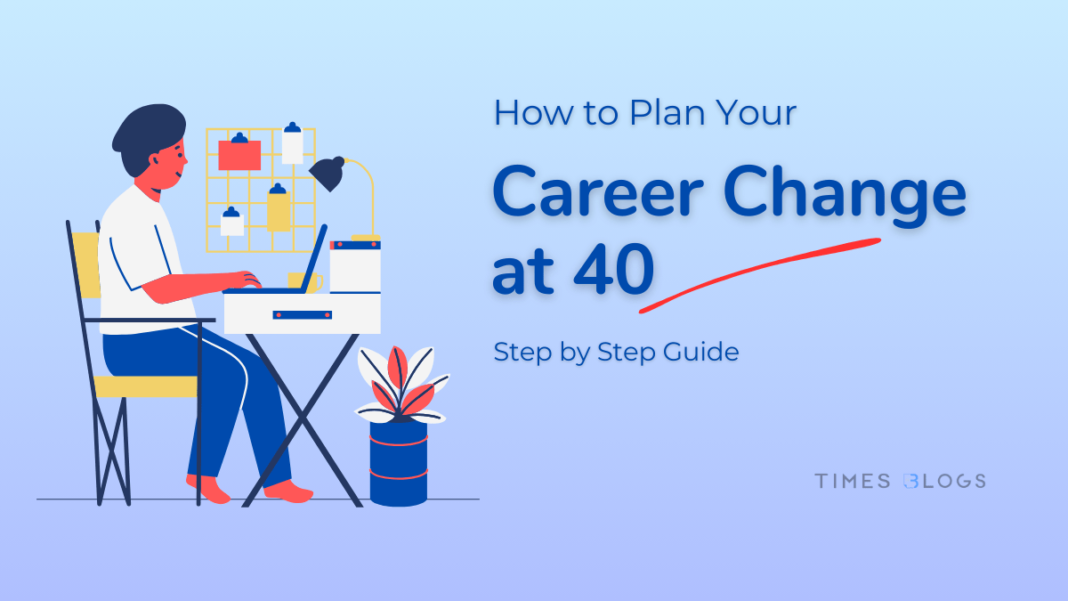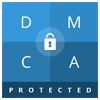Welcome to this comprehensive, step-by-step guide on how to plan your career change at 40! If you’re reading this, chances are you’re at a crossroads in your professional life, contemplating a switch in your career path. You’re certainly not alone; many individuals consider making a career change in their 40s, but few take the plunge. Why? Because there’s an overwhelming myth that suggests changing careers at this age is risky, difficult, or even too late.
We’re here to dispel that myth.
You might be thinking, “I’ve spent nearly two decades in this industry. How can I possibly change now?” or “Will employers even consider hiring someone my age for a new role?” These are valid concerns, but they’re largely fueled by misconceptions.
In this guide, we’ll take you through every critical phase of the career transition process, from self-assessment to job-searching strategies and everything in between. Whether you’re seeking greater work-life balance, wanting to pursue a long-held passion, or just craving a fresh challenge, planning a career change at 40 can be one of the most rewarding decisions you’ll ever make.
Ready to turn your new career dream into reality? Let’s dive in.
Table of Contents

The Myth Surrounding Career Change at 40
When you hear about making a career change at 40, what’s the first thought that crosses your mind? For many, it’s a parade of stereotypes and warnings—like “you’re too old,” “you’ll have to start from scratch,” or “employers won’t hire someone your age.” These myths, perpetuated by societal norms and often internalized as facts, can significantly discourage many talented individuals from exploring new career horizons. Let’s dismantle some of these myths.
Myth 1: You’re Too Old
The biggest myth surrounding a career change at 40 is that you’re “too old.” In truth, the average life expectancy has been on the rise, and people are remaining in the workforce longer than before. At 40, you likely have another 20–25 years or more of work ahead of you—that’s a long time to stay in a career that you find unfulfilling.
Myth 2: Employers Prefer Younger Candidates
While it’s true that some industries may target younger employees for their entry-level roles, many employers value the experience and emotional intelligence that older workers bring. Your years in the workforce can be a valuable asset, providing a wealth of knowledge, skills, and professional connections that younger candidates might not have.
Myth 3: You’ll Have to Start from Scratch
A career change doesn’t necessarily mean starting from the bottom rung of the ladder. Many skills are transferable between different roles and industries. For example, if you’ve been in sales and wish to move into marketing, your communication and customer engagement skills will serve you well. You may need to upskill, but it’s not like pressing a reset button on your professional life.
Myth 4: It’s Financially Risky
Changing careers does come with some level of financial uncertainty, especially if you’re moving to a less lucrative field or starting your own business. However, financial planning can mitigate many of these risks. Later sections of this guide will delve into budgeting and emergency funds, aimed at guiding you through a financially secure transition.
Myth 5: You Won’t Be Able to Keep Up
The assumption that older workers can’t keep up with new technologies or industry changes is not only ageist but also untrue. Many people in their 40s, 50s, and beyond successfully adapt to new work environments by upskilling and embracing lifelong learning.
Understanding these myths—and the truths that counter them—can empower you to make informed decisions about your career. Age is just a number, but your happiness and fulfillment are worth far more. Remember, it’s never too late to pursue a new career path. The key lies in proper planning and preparation, subjects we will delve into in the following sections of this guide.
So, are you ready to debunk these myths and embrace the exciting challenge of a career change at 40? Let’s move on to explore why this could be the perfect time for your transition.
Why It’s Actually a Good Time for a Career Change at 40
You’ve navigated through the myths and discovered that a career change at 40 is not only possible but also might be a wise move. But why exactly is this age an ideal time for such a significant shift? Here are compelling reasons that showcase why your 40s could be the perfect decade to pivot professionally.
You’re at the Peak of Emotional Intelligence
By the time you reach your 40s, you’ve likely developed a strong sense of emotional intelligence—your ability to understand and manage emotions, both your own and those of others. This skill is crucial in any workplace and can make you a more effective communicator, leader, and collaborator. Emotional intelligence can be your secret weapon as you venture into a new career path.
Your Wealth of Experience is an Asset
If you’ve spent 15-20 years or more in the workforce, you’ve amassed a treasure trove of skills, experiences, and professional connections. These assets can be transferred and adapted to your new career. Employers value experience; your resume will likely reflect a rich history of problem-solving, team leadership, and work ethic that newcomers in the field won’t possess.
You Have a Clearer Sense of What You Want
At 40, you’ve probably learned a thing or two about what makes you happy, what your strengths and weaknesses are, and where you find the most professional fulfillment. This self-awareness can guide you in choosing a career that aligns better with your personal values and interests, ensuring that your new path is one that brings you joy and a sense of purpose.
Financial Stability to Take Risks
By this point in your life, you may have achieved some level of financial stability. Perhaps you’ve paid off student loans, or your home mortgage is more manageable than in your earlier years. This financial cushion could offer you the latitude to make choices that might be riskier but ultimately more rewarding.
You Understand the Value of Work-Life Balance
Over the years, you’ve likely come to appreciate the importance of a work-life balance. You’re no longer willing to sacrifice your well-being for a paycheck. Many employers are recognizing this too and are offering more flexible work arrangements. Your desire for balance could lead you to roles or companies that prioritize employee well-being.
You’re Ready for a Fresh Challenge
After years in the same field or position, it’s natural to crave new challenges. A new career can rekindle your passion for work, fuel your creativity, and give you a renewed sense of purpose. This mental and emotional refresh can have positive ramifications in all areas of your life.
Networking Advantages
Decades of professional relationships can serve you well. The network you’ve built over the years can open doors in your new career that might be closed to others. Don’t underestimate the power of a well-placed recommendation or introduction.
A career change at 40 isn’t just a whimsical fantasy—it’s a plausible, achievable goal. With the advantages of emotional maturity, valuable experience, financial stability, and a clearer sense of direction, your 40s could be the launching pad for the most satisfying phase of your professional life. So, why wait? Your next chapter is waiting for you to write it, and this guide will show you how to take those crucial first steps.

Section 1: Self-Assessment and Skill Gap Analysis
The first and perhaps most crucial step in planning your career change at 40 is to take a deep dive into your own skills, interests, and career aspirations. Understanding where you currently stand and where you want to go can guide you through the rest of this transformative journey.
Self-Assessment
Why It’s Important
Self-assessment is the foundational block upon which you can build your new career. It helps you answer vital questions like: What are your strengths and weaknesses? What aspects of your current job do you enjoy or dislike? What are your long-term career goals?
Tools and Techniques for Self-Assessment
- Personality Tests: Tools like the Myers-Briggs Type Indicator (MBTI) or the Holland Codes career tests can offer insightful details about your personality type and ideal work environments.
- Strengths and Weaknesses Analysis: Create a SWOT (Strengths, Weaknesses, Opportunities, and Threats) chart specific to your career objectives.
- Consult a Career Coach: A professional can provide a structured framework for self-assessment and offer personalized advice tailored to your circumstances.
- Journaling: Documenting your day-to-day experiences and feelings about your current job can reveal patterns or trends that might not be immediately obvious.
Check our detailed article: The Importance of Self-Assessment in Personal Development
Skill Gap Analysis
Identifying the Necessary Skills for Your Desired Career
Research is key. Utilize resources like LinkedIn, industry-specific publications, or informational interviews to understand what skills are in demand for the career you’re interested in.
Matching Current Skills to Required Skills
List down all your skills, both technical and soft skills. Then, compare this list with the skills you found to be necessary for your desired role. This comparison will reveal any gaps that you may need to fill.
Finding the Gaps and Making a Plan
- Basic Skill Gaps: These are foundational skills you might be lacking. For example, if you’re moving into a data-driven role, understanding basic data analytics might be essential.
- Advanced Skill Gaps: These are specialized skills unique to the specific role or industry you are targeting. For instance, if you’re moving from retail management to project management in tech, you might need to learn Agile methodologies.
- Soft Skill Gaps: Don’t underestimate the power of soft skills like communication, leadership, or time management. Sometimes, mastering these can be as important as technical skills.
- Action Plan: Create a timeline for how you will acquire these new skills. Will you take online courses? Attend workshops? Determine the best methods for you to close these skill gaps.
Taking the time for a comprehensive self-assessment and skill gap analysis may seem daunting initially, but it’s an investment in your future. This preparation sets the stage for every subsequent step in your career change at 40, from networking to job searching to nailing the interview for your dream job. You are essentially setting the coordinates for your career GPS, and with that guidance, you’re far more likely to reach your desired destination.
Section 2: Market Research and Networking
Once you’ve mapped out your skills and identified the gaps, the next crucial step is to research your targeted market and start building your network within that industry. Both of these elements are essential for making a smooth transition into a new career at 40.
Market Research
Understanding Promising Industries and Roles
Your career change will be most effective if you’re moving into a growing industry with a high demand for skills—especially the skills you either possess or are willing to learn. Research industries and roles that are on an upward trend. Use resources like the Bureau of Labor Statistics, industry reports, and trusted news outlets to gain this knowledge.
Utilizing Online Platforms for Research
- LinkedIn: Follow industry leaders, join relevant groups, and engage in conversations to learn more about current trends and demands in your targeted field.
- Glassdoor: This platform provides invaluable insights into companies, including salary ranges, reviews from current and past employees, and even specific interview advice for various roles.
- Industry Blogs and Podcasts: Follow credible sources of information that can provide deep insights into the field you’re interested in. The firsthand experiences, case studies, and expert interviews commonly found in blogs and podcasts can be incredibly enlightening.
Networking
Networking is about more than just shaking hands and collecting business cards; it’s about building genuine relationships that can help you—and the people you network with—grow professionally.
Tips for Reaching Out
- Warm Contacts: Start with people you already know—former colleagues, friends, or even family members who are in the industry you’re targeting.
- Cold Contacts: When reaching out to people you don’t know, be respectful of their time. Tailor your communication to make it relevant to their work and explain why you’re seeking their advice or insights.
- Informational Interviews: These are informal conversations with professionals in the field you’re interested in. The goal is not to land a job but to gain information and advice that can guide you.
Networking Platforms and Associations
- LinkedIn: Apart from following industry leaders, actively engage in meaningful conversations, post relevant content, and take part in community discussions.
- Meetup: Many cities have industry-specific gatherings and Meetup events that you can attend to make connections in a less formal environment.
- Professional Associations: Becoming a member of relevant industry associations can give you access to exclusive resources and networking opportunities.
Networking and market research are the groundwork activities that set the stage for your career change at 40. By the end of this phase, you should have a clear understanding of the landscape of your new career path and the beginnings of a network to help you navigate it. Just remember, the quality of your network isn’t determined by the number of connections but by the strength and relevance of those connections. So, focus on building relationships that matter.

Section 3: Financial Planning
Financial planning is a cornerstone in the edifice of your career change, especially when you’re considering such a transition at 40. At this age, financial responsibilities often extend beyond just taking care of yourself; you might have a family to support, mortgage payments, or educational expenses for your kids. Here’s how to prepare financially for your career move.
Budgeting
Assessing Your Current Expenses
Start by compiling a comprehensive list of all your expenses, from fixed costs like housing and insurance to variable costs like groceries and entertainment. This will give you a baseline budget to work with.
Creating a New Budget
You’ll need to plan for new expenses that come with a career change, such as courses for upskilling, commuting to different locations, or even a possible initial dip in income. Update your budget accordingly to accommodate these changes.
Emergency Fund
Why It’s Important
An emergency fund can act as a financial cushion and reduce stress as you transition into a new career. This fund should be able to cover at least 3-6 months’ worth of living expenses.
Building an Emergency Fund
If you don’t have an emergency fund, start building one immediately. Prioritize this over less urgent financial goals like vacations or non-essential purchases.
Investment and Retirement Plans
Evaluating Your Current Plan
Before you make a career change, assess your current investment and retirement plans. Understand the terms and conditions, especially as they pertain to your current job. Are there employer contributions that you might lose? Are there penalties for early withdrawal?
Realigning Your Investment Strategy
A career change might mean a shift in your risk tolerance and financial goals. Consult a financial advisor to realign your investment strategy to fit your new career trajectory.
Health and Benefits
Comparing Benefits
If you are leaving a job with excellent benefits, you’ll need to consider how your new career will match up. This includes healthcare, retirement contributions, and other perks.
Bridging the Gap
Should there be a lapse in benefits, look into short-term health insurance plans or consider contributing to an individual retirement account to maintain your long-term financial health.
Balancing Time and Money
Understand that some steps in this career transition may require a trade-off between time and money. For example, you may choose to take a part-time job or freelance gigs while you’re studying for a new role. Be prepared to juggle multiple commitments efficiently.
Taking the time to financially plan for your career change at 40 is not just a smart move—it’s an essential one. This financial planning can afford you the freedom and peace of mind to fully invest yourself in your new career path, making your transition not just possible, but successful.
Section 4: Upskilling, Reskilling, and Certifications
You’ve mapped out your skills, researched the market, built your network, and organized your finances. Now, it’s time to prepare yourself for the actual work you’ll be doing in your new career. This is where upskilling, reskilling, and certifications come into play.
Upskilling
What It Is and Why It’s Important
Upskilling involves adding to your existing skill set to make you more qualified and versatile in your current or future job roles. Even if your career change involves a field that is somewhat related to your previous job, upskilling can make your transition smoother and more successful.
How to Upskill
- Online Courses: Websites like Coursera, Udemy, and LinkedIn Learning offer a plethora of courses that can enhance your skills.
- Workshops and Seminars: These are more hands-on and are great ways to not only learn but also network with professionals in your desired industry.
- On-the-Job Training: If your new or current employer offers training programs, take advantage of them to upskill efficiently.
Reskilling
What It Is and Why It’s Important
Reskilling is the process of learning new skills so you can do a different job. This is particularly relevant if your career change at 40 involves transitioning into an entirely different field.
How to Reskill
- Bootcamps: These are intensive training programs that teach you the essentials of a new field quickly but comprehensively.
- Community College: Many community colleges offer vocational courses aimed at reskilling.
- Mentorship: Having a mentor who is already established in your desired field can provide personalized guidance.
Certifications
Why They Are Important
Certifications can validate your skills and make you more marketable in your new career. They are particularly beneficial if you don’t have formal experience in the field you are transitioning into.
Types of Certifications to Consider
- Industry-Specific: These are tailored to your chosen field and are often considered the most valuable.
- Soft Skills: Certifications in project management, communication, and other soft skills can be transferable across various sectors.
- Technical Skills: Depending on your new career, you may need certifications in specific software or technologies.
Where to Get Certified
- Professional Organizations: Many offer certifications to members and sometimes to non-members as well.
- Accredited Institutions: Colleges and specialized training centers often provide certification programs that carry significant weight.
- Online Platforms: Websites like edX, Coursera, and many others offer certification courses. However, make sure these are recognized in your industry before you invest time and money into them.
Upskilling, reskilling, and certifications are the building blocks that will prepare you for the actual work you will perform in your new career. When you have the necessary skills and qualifications, not only do you make yourself more employable, but you also give yourself the best chance for success in your career change at 40.
Section 5: Update Your Professional Brand
Your professional brand is the impression you make in your career and job search. It’s what people think when they hear your name and see your work. When you’re making a career change at 40, updating this brand is crucial to ensure that it aligns with your new career path. Here’s how to do it:
Digital Footprint
Importance of a Clean Digital Presence
Your digital footprint is basically anything that comes up when someone searches for your name online. It could include social media profiles, publications, or mentions in articles. Before diving into your new career, ensure that your digital footprint is both clean and up-to-date.
Steps to Clean Up
- Google Yourself: Conduct a thorough search for your name to see what pops up. Remove or request the removal of any unfavorable content.
- Social Media Cleanup: Make sure your social media profiles reflect the person you want to present to potential employers or clients.
LinkedIn Profile
Why It’s a Must
LinkedIn is the most popular platform for professional networking and job searches. Your profile should reflect your new career goals, skills, and qualifications.
Updating LinkedIn
- New Professional Photo: A current, professional photo can make a great first impression.
- Revised Summary: Your summary should now align with your new career objectives.
- Skills and Endorsements: Update the skills section to reflect your newly acquired skills and ask for endorsements from people who can vouch for these skills.
- Experience: Re-frame your past work experience to highlight the transferable skills that are relevant to your new career.
Resume and Cover Letter
Importance of Updating
If your resume and cover letter are not in line with your new career path, you risk confusing or even losing potential employers.
How to Update
- Functional Resume: Consider switching from a chronological to a functional format that emphasizes skills over job titles.
- New Language: Use the terminology that is specific to your new industry to show you understand it.
- Customized Cover Letters: Tailor your cover letter for each job application, emphasizing why your background makes you an excellent candidate for that particular job.
Personal Website and Portfolio
If you have a personal website or online portfolio, now is the time to update these as well. Showcase any new projects, skills, or certifications that align with your new career path.
Elevator Pitch
This is a brief, persuasive speech that you can use to spark interest in what you’re doing or offering. Your elevator pitch should be concise but packed with the information necessary to grab a potential contact’s interest. Practice your new elevator pitch so that you can easily express your updated professional brand and career objectives when networking.
By aligning your professional brand with your new career path, you not only increase your chances of landing the job you want but also make it easier for your network to help you. In today’s digital age, your online and offline persona must present a cohesive and targeted brand, and updating this is a pivotal part of your career change at 40.

Section 6: Job Searching Strategies
Congratulations, you’ve successfully reached the point where you’re ready to actively start job hunting in your new career path. While some aspects of job searching are universal, there are specific strategies that can make your quest for a new career at 40 more fruitful.
Tailored Job Search
Importance of a Targeted Approach
A scattergun approach to job applications is rarely effective. Focus on positions and companies that align well with your skills, values, and career objectives.
How to Tailor Your Search
- Job Boards: Use filters on job search websites to zero in on roles that match your skill set and career goals.
- Company Websites: If you have specific companies in mind, regularly check their careers page for new postings.
- Custom Applications: Tailor each resume and cover letter to the specific job description, using keywords from the posting to increase your chances of passing through Applicant Tracking Systems.
Networking and Referrals
The Value of a Strong Network
Your chances of being considered for a job multiply significantly when you’re referred by someone within the company.
How to Leverage Your Network
- Reconnect: Reach out to old colleagues, managers, and acquaintances who might help.
- New Connections: Utilize LinkedIn and industry events to connect with people in your desired field.
- Ask for Referrals: Don’t hesitate to ask your network to refer you for roles that you are interested in and qualified for.
Utilizing Recruitment Agencies
Pros and Cons
Recruitment agencies can save you time and possibly open doors to roles that aren’t publicly advertised. However, they work for the employer, not you, so their focus may not always align with your best interests.
Best Practices
- Research: Use agencies that specialize in your new industry or career path.
- Clear Communication: Be upfront about what you’re looking for to ensure you’re presented with relevant opportunities.
Freelancing or Part-time Roles
Testing the Waters
If you’re wary of diving headlong into a new career, consider freelancing or taking on a part-time role in your new field first. This provides practical experience and a better sense of what a full-time role would entail.
How to Start
- Online Platforms: Websites like Upwork or Freelancer can be a good starting point for freelance gigs.
- Network: Use your professional connections to find part-time or temporary roles that could lead to full-time employment.
Follow-Up and Persistence
The job search is a marathon, not a sprint, especially when you’re aiming for a career change at 40.
- Follow-up: If you haven’t heard back within two weeks of applying or after an interview, a polite email to inquire about the status can demonstrate your enthusiasm and may help your application stand out.
- Keep Applying: Don’t get discouraged. The more targeted efforts you make, the higher your chances of landing the right job.
Your job searching strategies can significantly impact the speed and ease with which you make your career change at 40. By using a targeted, network-enhanced, multi-platform strategy, you not only increase your chances of finding a job but also of finding the right job for your new career.
Section 7: Interview Preparation
Landing an interview in your new field is a critical milestone in your career change at 40. But getting the interview is just the first step. Preparing adequately for it can be the difference between an offer and a rejection. Here’s your comprehensive guide to acing your job interviews in your new industry.
Research the Company and Role
Why It Matters
Understanding the company culture, their product or services, and the specifics of the role you’re applying for not only impresses interviewers but also helps you answer questions intelligently.
How to Do It
- Company Website: Delve into the ‘About Us’ and ‘Product’ sections for foundational knowledge.
- Social Media: Companies often post news and updates on platforms like LinkedIn or Twitter.
- Employee Reviews: Sites like Glassdoor can provide insights into company culture and even specific interview tips.
Prepare Your Talking Points
Tell Your Story
Be prepared to explain why you are making a career change, focusing on how your existing skills will benefit the company in this new role.
STAR Technique
For competency questions, utilize the STAR technique:
- Situation: Describe the context.
- Task: Explain your responsibility in that situation.
- Action: Discuss what you did.
- Result: Share the outcome of your actions.
Mock Interviews
The Value of Practice
Practicing your answers can make you more articulate during the actual interview. Mock interviews can also help reduce anxiety.
How to Conduct Mock Interviews
- Friends and Family: A familiar face can make the initial rounds of mock interviews less intimidating.
- Professional Services: Some companies offer mock interview services that simulate a real interview experience.
Dressing for Success
Industry Norms
The appropriate attire can vary significantly between industries. Tech startups might have a more casual dress code, whereas corporate roles might require formal attire.
When in Doubt
If you’re unsure about the dress code, it’s better to be slightly overdressed than underdressed.
Questions to Ask the Interviewer
Remember, an interview is a two-way street. Prepare thoughtful questions to ask the interviewer. This not only demonstrates your interest in the role but also helps you assess if the company and job are the right fit for you.
Follow-Up
Send a personalized thank-you email within 24 hours of the interview. Recap a highlight of the interview or elaborate on a topic that came up to show you were engaged and are enthusiastic about the role.
By investing time in thorough interview preparation, you’re setting yourself up for success in your quest for a new career. Your age and experience are assets, not hindrances. Your ability to adequately prepare and execute a stellar interview can set you apart in the crowded job market, helping you achieve your goal of a fulfilling career change at 40.
Section 8: Making the Transition
You’ve done it. After all the self-assessment, planning, learning, and interviewing, you’ve secured a job offer in your new career field. The next phase is making the transition, which can be as nerve-wracking as it is exciting. Here’s how to navigate this important stage smoothly when contemplating a career change at 40.
Giving Notice at the Current Job
Timing is Crucial
When to give notice can depend on various factors, including your current job’s notice period requirements and your new job’s start date.
How to Give Notice
- In Writing: Prepare a formal resignation letter that states your last working day. Keep the message professional and positive.
- Face-to-Face: Whenever possible, resign in person or via a video call with your immediate supervisor. Follow up by sending your formal resignation letter.
- HR Procedures: Make sure you understand your company’s exit procedures, including how unused vacation days are handled and when benefits will terminate.
Handling Counteroffers
The Lure of Staying Put
Counteroffers can be flattering and might make you reconsider. However, remember the reasons you wanted to change careers in the first place.
Should You Accept?
- Career Goals: Does the counteroffer align with your new career objectives? More money in the old job doesn’t address the reasons you wanted to leave, such as a lack of fulfillment or career growth.
- Company Dynamics: Accepting a counteroffer can change how you’re viewed at the company. Will staying put hinder your long-term progression?
Making the Emotional and Logistical Shifts
Emotional Preparedness
- Letting Go: Be prepared for a range of emotions as you say goodbye to colleagues and a work environment you’ve known for a while.
- Embracing the New: As you start your new job, allow yourself to feel excited about the unknowns and the opportunities that lie ahead.
Logistical Changes
- Work-Life Balance: A new career may come with a different schedule or even a new location. Plan accordingly, considering factors like commuting time, work hours, and family commitments.
- First-Day Preparations: Before your first day, confirm logistical details like the start time, dress code, and any items you need to bring. Aim to arrive a little early to make a positive first impression.
- Onboarding: During your first weeks, you’ll likely undergo orientation or training. Be an active participant in these sessions to accelerate your understanding of your new role and the company culture.
Successfully making the transition to a new career requires attention to both emotional and logistical details. It involves letting go of the familiar and embracing a new set of challenges and opportunities. Your career change at 40 is not just a shift in what you do but also a transformation in how you see yourself as a professional. With the right preparation and mindset, you can make this transition a springboard to a fulfilling second act in your working life.
Conclusion
Embarking on a career change at 40 isn’t just a decision; it’s a courageous leap towards rejuvenating one’s professional life. Throughout history, there have been countless tales of individuals who chose to rewrite their narratives in midlife, and they are a testament to the fact that age is but a number. It’s about the spirit, the drive, and the dedication you bring to the table.
The steps outlined in this guide are designed to provide a structured pathway for those looking to transition smoothly into a new career. From debunking the myths surrounding such a change to ensuring that your professional brand aligns with your new direction, every stage plays a pivotal role in your journey.
The beauty of being 40 and considering a career change is that you’re at the intersection of experience and ambition. You’ve garnered a wealth of skills and knowledge in your previous roles, and you’re driven by a newfound passion or purpose to venture into uncharted territory.
To anyone considering or undergoing a career change at 40, remember that every professional path has its challenges and moments of self-doubt. But with determination, a well-thought-out strategy, and an open heart, you can turn this transition into one of the most rewarding phases of your professional journey.
In the words of C.S. Lewis, “You are never too old to set another goal or to dream a new dream.” So, to those contemplating a new beginning, embrace this adventure. Your next chapter might just be the best one yet.




